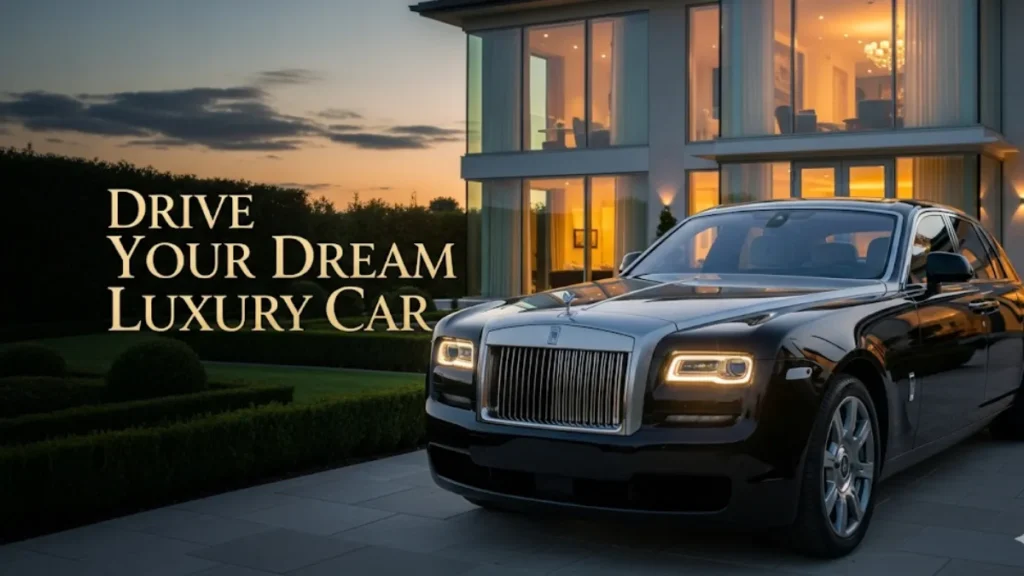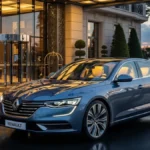Owning a luxury car has always been seen as an expensive dream, something that only a select few could afford. Most people believe these cars are costly to buy, hard to maintain, and far out of reach for a middle-class household. But with the arrival of modern financial plans and fuel-efficient technology, this dream is no longer reserved for the wealthy. Imagine driving a stylish luxury car that delivers an astonishing mileage of 35 km per litre, requires no down payment, and can be yours with an EMI as low as ₹7,500 per month. Sounds incredible? Let’s see how this new trend is reshaping India’s automobile market.
Why Mileage Is a Game Changer in Luxury Cars
Fuel efficiency is one of the most important factors for Indian buyers. With rising fuel prices, mileage often becomes the deciding point. Luxury cars, until recently, were notorious for poor efficiency despite their powerful engines. But thanks to hybrid and advanced petrol technologies, several models now deliver up to 35 km/l. This breakthrough allows car buyers to enjoy the comfort and prestige of luxury vehicles without worrying about skyrocketing fuel bills.
Making Luxury Cars Accessible With Zero Down Payment
The upfront cost has always been a major roadblock in purchasing luxury cars. Typically, buyers are required to pay 10–20% of the car’s value in advance, which often amounts to lakhs. But today, banks and NBFCs are offering zero down payment schemes on selected models. This means you no longer need to arrange a hefty sum at the time of purchase. Instead, you simply drive your dream car home and begin paying through manageable installments.
The Advantage of a ₹7,500 EMI
Luxury car EMIs are generally seen as budget breakers. But with new financial structures, you can now get one for as low as ₹7,500 per month. Lenders are offering longer loan durations and lower interest rates, making repayments lighter on the pocket. For example, a car priced at ₹6–7 lakhs, financed over 7–8 years, results in surprisingly low monthly installments. This makes luxury cars possible not only for high-income earners but also for salaried professionals and small entrepreneurs.
Hybrid and Petrol-Efficient Innovations
The revolution in mileage is largely due to hybrid systems that combine petrol engines with electric motors. These vehicles seamlessly switch between modes depending on driving conditions, ensuring fuel is consumed efficiently. Many models even regenerate energy during braking, further improving mileage. Along with reduced fuel consumption, hybrid technology lowers emissions, making these cars eco-friendly while still powerful.
Lifestyle Benefits of Owning a Luxury Car
Driving a luxury car is about more than just reaching your destination—it’s about upgrading your daily lifestyle. Premium models often include advanced features like automatic climate control, leather upholstery, modern infotainment systems, superior sound quality, and top-notch safety measures such as ABS, airbags, and parking sensors. Alongside unmatched comfort, these vehicles elevate your social image and provide a sense of achievement.
Who Can Take Advantage of These Offers?
These attractive schemes are not limited to business tycoons or high-income earners. Banks are now opening doors for salaried employees, freelancers, and even small-scale entrepreneurs with stable incomes. As long as you maintain a good credit score and can provide income proof, you may qualify for zero down payment loans with budget-friendly EMIs. This has created opportunities for India’s ambitious middle class to step into the luxury segment.
Affordable Models Offering 35 km/l Mileage
While global luxury brands like Audi, BMW, and Mercedes are gradually embracing hybrid technology, Indian and Japanese manufacturers have taken the lead in affordable luxury. Cars such as the Toyota Camry Hybrid, Honda City Hybrid, and select Maruti Nexa models already achieve mileage of 25–30 km/l, with some reaching close to the 35 km/l benchmark under certain conditions. These vehicles offer a fine balance of performance, elegance, and efficiency—without the premium price tag.
Understanding Zero Down Payment Schemes
Under these schemes, lenders cover the entire cost of the vehicle, including registration and insurance in some cases. In return, the loan tenure is stretched, and EMIs are slightly adjusted. However, when installments are as low as ₹7,500, the deal becomes extremely attractive. To qualify, buyers usually need a strong CIBIL score, regular income documentation, and IT returns. While the process is similar to standard loans, eligibility checks are often stricter.
Long-Term Affordability
Some buyers worry about paying higher interest over extended loan periods. While this is partially true, the reduced monthly outflow balances the overall cost. Spending ₹7,500 a month is often cheaper than house rent in major Indian cities. Combined with fuel savings from 35 km/l mileage, the ownership experience becomes much more affordable in the long run.
The Changing Face of India’s Automobile Market
These financing schemes are transforming luxury car ownership in India. What was once a status symbol of the elite is now within the reach of middle-class professionals. This growing demand has encouraged carmakers to design more affordable luxury models equipped with the latest features and high fuel efficiency. The result is a more competitive market, with customers getting better value than ever before.
Should You Go Ahead With It?
If you have always wanted a luxury car but held back due to financial barriers, this may be the perfect time. Zero down payment eliminates upfront stress, and ₹7,500 EMI fits comfortably into many household budgets. Pair that with remarkable fuel efficiency, and you have an offer that is difficult to ignore. That said, always check loan terms carefully, review interest rates, and watch out for hidden charges before signing.
Hi, I’m Siddharth Sachdeva, the author behind Ultimacity. I have a strong interest in technology and automobiles, and I enjoy sharing useful updates, reviews, and insights that readers can trust. My goal is to make complex information easy to understand and to bring the latest trends in tech and autos to a wider audience.



